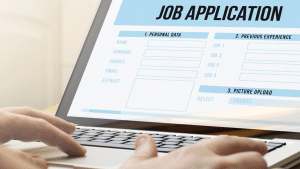How To Write The Perfect Cover Letter In 2025: A Complete Guide!

Your cover letter has become a critical differentiator in the rapidly evolving U.S. job market of 2025. While AI and applicant tracking systems (ATS) dominate initial resume screenings, 83% of hiring managers admit a strong cover letter can sway their decision when candidates are equally qualified (CareerBuilder).
This comprehensive guide goes beyond basic templates to provide actionable strategies tailored to current hiring trends, including:
- How to beat ATS algorithms while appealing to human readers
- The 2025 formula for showcasing soft skills employers demand
- Industry-specific approaches for tech, healthcare, finance, and more
- Digital-era considerations like video cover letters and LinkedIn integration
Whether you’re a Gen Z applicant or a seasoned professional navigating career changes, this 3,000-word master guide will transform your cover letter from an afterthought to your most powerful job search tool.
The 2025 Cover Letter Landscape – What’s Changed?

The New Rules of Applicant Tracking Systems
Modern ATS software has evolved dramatically:
- Natural Language Processing (NLP) now evaluates tone and relevance (Jobscan, 2024)
- Keyword “clustering” looks for related terms, not just exact matches
- Sentiment analysis detects genuine enthusiasm vs. generic phrasing
Actionable Tip:
Use tools like Skillroads or Jobscan to analyze your letter’s ATS compatibility before submitting.
The Human Factor: What Hiring Managers Really Want
A 2024 LinkedIn survey revealed U.S. recruiters prioritize:
- Problem-solving narratives (67%) over generic responsibilities
- Cultural add (59%) beyond just cultural fit
- Data-driven achievements (72%) with measurable impact
Example Upgrade:
Instead of “Managed social media accounts”
Write “Grew LinkedIn engagement 220% in 6 months by revamping content strategy, directly contributing to 3 qualified leads/month.”
Read next: How To Make A Resume That Gets You Noticed And Hired: A Step-By-Step Guide
How Your Cover Letter Sets Up Interview Success
Your cover letter isn’t just a gateway to an interview—it’s a strategic preview of what you’ll discuss. Here’s how to align both:
Plant Interview Talking Points
- Highlight 1-2 achievements in your letter that you want to expand on later.
- Example: If you mention “streamlined onboarding processes,” prepare a STAR story about it for the interview.
Address Potential Objections
- Use the letter to proactively explain gaps or career shifts.
- Example: “My two years freelancing taught me agile project management—a skill I’ll apply to your team’s fast-paced environment.”
Mirror the Job Description
- Repeat key phrases from the job post so interviewers recognize your fit.
Pro Tip: Save your cover letter and revisit it before the interview—it’s a cheat sheet for what the employer cares about.
Crafting Your Masterpiece – Section-by-Section Breakdown
The Header: More Than Just Contact Info
2025 Best Practices:
- Include a hyperlinked LinkedIn profile (87% of recruiters check it)
- Add a QR code to your online portfolio (especially for creative fields)
- For email submissions, use the subject line:
“Application for [Position]: [Your Unique Value Proposition]”
The Opening Hook: 5 Proven Formulas
-
The “Shared Connection” Start
“When [Mutual Contact] suggested I apply, I immediately recognized how my experience in [Relevant Skill] aligns with [Company]’s current [Project/Initiative].”
-
The “Impressive Stat” Lead
“After driving $2.3M in SaaS upsells last year, I’m eager to bring my enterprise sales approach to [Company]’s expanding client base.”
-
The “Trend Insight” Approach
“As AI transforms financial advising, my hybrid human-tech client strategy at [Current Company] has maintained 98% satisfaction scores – a balance I see [Company] values.”
-
The “Mission Match”
“Having volunteered 200+ hours with urban farming nonprofits, I was thrilled to see [Company]’s new sustainability commitments in your annual report.”
-
The “Problem-Solution” Opened
“Your job posting mentions challenges with [Issue]. At [Current Company], I addressed this by [Solution], achieving [Result].”
The Body: Storytelling with the STAR-Plus Method
Go beyond STAR (Situation-Task-Action-Result) by adding:
- Transferability: How this translates to the new role
- Learning: What the experience taught you
- Tools: Specific platforms/technologies used
Healthcare Example:
“When our clinic faced 30-minute EHR documentation delays (Situation), I led training on voice-recognition charting (Action), reducing time per patient by 40% (Result). This experience with Epic Systems positions me to quickly adapt to your transition to Cerner next quarter (Transferability).”
The Close: The 3-Part Power Finish
Future Vision: “I’m excited by [Company]’s plans to [Initiative] and would welcome discussing how my [Specific Skill] could contribute.”
Flexible CTA: “I’m available Tuesday-Thursday for an interview and can be reached at [Phone] or via Calendly [Link].”
Gratitude + Follow-Up: “Thank you for considering my application. If I don’t hear back by [Date], may I follow up?”
Read next: 10 LinkedIn Profile Secrets Of The Top 10% (And How To Steal Them!)
Industry-Specific Adaptations
Tech Cover Letters
Do:
- Mention specific languages/systems (Python, AWS, etc.)
- Include GitHub/portfolio links
- Reference tech blogs/forums you contribute to
Avoid:
- Overusing technical jargon without business context
Healthcare Cover Letters
Critical Elements:
- Patient outcomes data
- HIPAA/regulatory experience
- Team collaboration examples
Power Phrase:
“My 95% patient satisfaction scores reflect my dual focus on clinical excellence and compassionate care – values clearly embodied in your ‘Patients First’ initiative.”
Finance Cover Letters
2025 Must-Haves:
- Regulatory changes knowledge (SEC updates, crypto policies)
- Risk management examples
- Data visualization proficiency
Quantify Everything:
“Optimized portfolio allocations during 2023 volatility, limiting losses to 8% vs. sector average of 15%.”
Read next: Skill Trends: What Employers Are Looking for in 2025
Digital & Alternative Formats
Video Cover Letters
When to Use:
- Creative/tech roles
- Remote positions
- When the job posting emphasizes “communication skills”
Script Framework:
Hook (5 sec): “What if I told you there’s a proven way to cut customer onboarding time in half?”
Credibility (15 sec): “At [Company], I…”
Transition (10 sec): “Here’s how I’d apply this at [Hiring Company]…“
CTA (5 sec): “Let’s discuss – schedule time below!”
LinkedIn InMail Cover Letters
Structure:
Subject: “[First Name], thought you’d appreciate this [Industry Insight]”
Opener: Reference their recent post/content
Body: 3 bullet points of relevant experience
Close: “Would you be open to a 15-minute chat about [Specific Topic]?”
The Psychology of Persuasion in Cover Letters

In today’s tough job market, your cover letter is your first shot and a smart move. It’s not just about listing skills – it’s about telling a story that links your worth to the job’s needs.
When done right, your letter becomes an interview road map that hiring managers will reference throughout the hiring process. Let’s break down exactly how to create this powerful connection:
-
-
The Primacy/Recency Effect
- Place your strongest achievement first and last in your letter
- Example opener: “Growing revenue by 140% at [Company] taught me…”
- Example closer: “…and I’m ready to deliver similar results for [Hiring Company].”
-
Social Proof Triggers
- Name-drop recognizable clients/partners:
-
- “My campaign for Fortune 500 client [X] achieved…”
-
- Reference industry awards or publications
-
Loss Aversion Language
- Frame value as what they’ll miss without you:
“Without optimized CRM workflows, our team would have left $350K in pipeline untapped last quarter.”
The “Resume Companion” Cover Letter Strategy
Your cover letter and resume should function like a power duo, not identical twins. Follow this alignment system to create synergy while avoiding redundancy:
1. Visual Mirroring: The Silent Credibility Boost
- Use identical fonts/header styles (e.g., if your resume uses Calibri 11pt with bold section headers, mirror this exactly)
- Match bullet formats (same indentation, symbols, and line spacing)
- Why it works: 68% of recruiters notice consistency in application materials (Ladders Eye-Tracking Study, 2023). It subconsciously signals professionalism.
2. Strategic Repetition: Depth Over Duplication
- Select 3-4 resume bullets worth expanding (prioritize metrics-rich achievements)
- Add context your resume can’t show:
- Resume: “Increased SaaS retention by 22%”
- Cover Letter: “When our SaaS platform faced 30% churn, I redesigned the onboarding flow (see Figma prototype)—driving 22% higher retention and saving $450K annually.”
3. The “See Resume” Power Move
For complex achievements:
“I led our AI integration (see resume Project Highlights) that reduced processing time by 8 hours/week—but the real win was how we implemented it without disrupting legacy systems.”
Key Benefits:
- Guides the recruiters’ eyes between documents
- Saves space while demonstrating self-awareness
- Prevents overwhelm (57% of hiring managers prefer concise letters that reference resumes (Jobvite, 2024))
Pro Tip: Add a hyperlinked “See Resume” (PDF) or “View Portfolio” if submitting digitally.
Read next: Top 10 Career Tips for 2025
The Final Checklist
Before hitting send, verify:
- Customized for each application
- ATS-optimized (1.5% keyword density)
- Error-free (Grammarly + human proofread)
- Format consistent (PDF preferred)
- Follow-up plan set (Calendar reminder for 7 days)
Your 2025 Cover Letter Action Plan
Mastering the perfect cover letter in today’s tough job market is about six key steps: research deeply, hook quickly, structure well with STAR-Plus, customize exactly, optimize smartly for ATS, and polish carefully. It’s not just getting your application seen—it’s telling a story that links your skills to the boss’s needs.
Now go write the cover letter that lands you the interview—and the job. The opportunity is yours for the taking!





